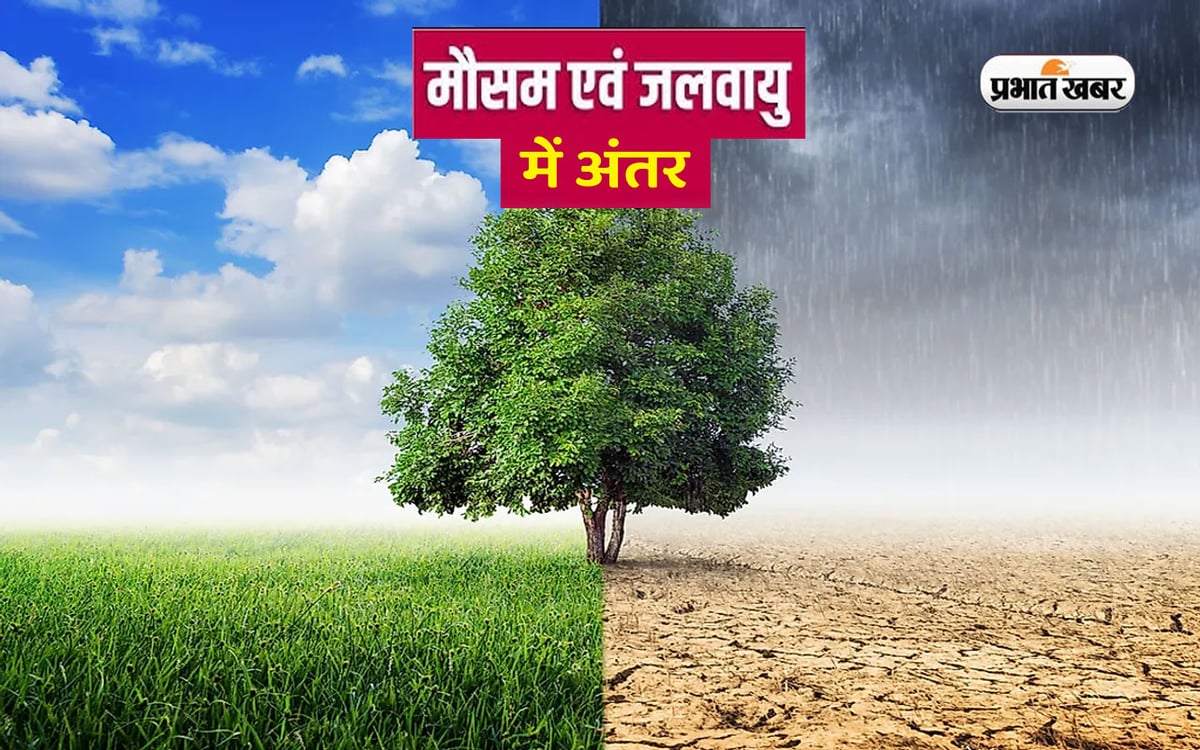Weather And Climate Difference: Understanding the difference between weather and climate is important to understand the atmospheric conditions and patterns that shape our planet. Although these terms are often used interchangeably in casual conversation, they represent different aspects of Earth’s atmospheric behavior. In this article, we will explore the disparities between weather and climate, their respective characteristics, and their significance in different contexts.
What is the weather?
Weather is part of the atmosphere. It includes factors like rainfall, temperature, humidity, wind speed and atmospheric pressure. The weather is always changing. It never remains constant. This is how you can understand the change in weather. Like sometimes there is strong sunshine, there is heavy rain and sometimes it is a normal day. At the same time, the order of its change can be on the basis of some days, weeks or even months. In such a situation, there are fluctuations in the weather due to many factors.
What is climate?
Let us tell you that the weather pattern that persists for a long time in any one area is called climate. Through this, changes in weather in any one area over a period of time are observed. This is quite different from the weather, about which we have already told you.
What is climate change?
Climate change is perhaps the biggest environmental concern of the present time. This is because drastic changes in the Earth’s temperature affect all living organisms.
Difference between climate and weather
Climate Similar to the difference in weather, weather differs from climate. Weather is determined by the changes that occur in the weather during a specific time of the year. In contrast, climate is the behavior of the atmosphere over long periods of time. Thus, the main difference between weather and climate is also the measurement of duration.
-
Various natural and human activities have contributed to climate change, such as volcanic eruptions, temperature fluctuations, CO2 concentrations, and more.
-
Human activities such as deforestation have increased the levels of greenhouse gases responsible for high heat absorption.
-
Therefore, it is important to act and take appropriate measures to reduce the pace of climate change.
Know how the weather is in your city
This is the weather of Bihar
Cold wave continues in Bihar. According to the information received from the Meteorological Department, there is going to be a severe cold wave in the entire state from January 19 to January 24.
The situation is like this in Jharkhand
According to Meteorological Center scientist Abhishek Anand, there will be dense fog in the morning of January 19 also. In view of the situation, the Meteorological Department has issued a yellow alert till January 20. However, the weather is likely to remain dry during the day. There is a possibility of a drop of two to four degrees in the minimum temperature from January 20 onwards.
City-Minimum Temperature
Jammu—6 degrees Celsius
Shimla—3 degrees Celsius
Delhi—7 degrees Celsius
Bhubaneswar—20 degrees Celsius
Dehradun—6 degrees Celsius
Lucknow—8 degrees Celsius
Chennai—21 degrees Celsius
Patna—10 degrees Celsius
Ahmedabad—14 degrees Celsius
Bengaluru—16 degrees Celsius
Bhopal—10 degrees Celsius
Kolkata—15 degrees Celsius

